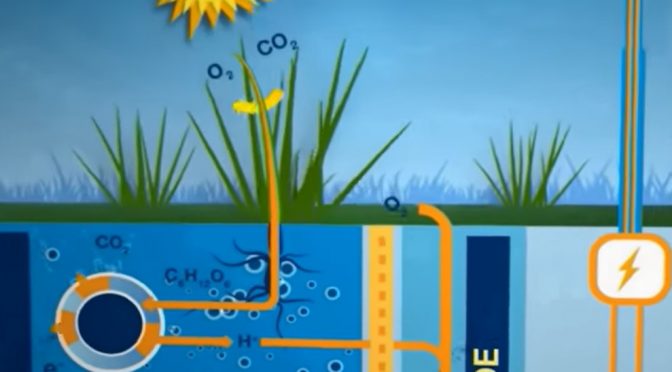Introduction
Welcome back, readers! Today, we embark on an exciting journey into the world of bio-photovoltaics, a revolutionary concept that allows us to generate electrical energy directly from sunlight using the power of photosynthesis in plants. In a video #1993 by Robert Murray-Smith (1993 How To Make A Bio – Photovoltaic Solar Cell), he took us to Kew Gardens to explore this fascinating idea, and now, we are going to delve into the process of building our very own bio-photovoltaic system. Let’s dive in and discover how nature’s most basic processes can power our future!
Understanding Bio-Photovoltaics
Bio-photovoltaics, often referred to as “bio-PV” or “biophotovoltaic cells,” is a cutting-edge field that seeks to integrate biological systems with photovoltaic technology. Traditional photovoltaic cells rely on inorganic semiconductors to convert sunlight into electricity. In contrast, bio-photovoltaics employ the natural process of photosynthesis found in plants to achieve the same goal.
Photosynthesis is a miraculous process that occurs in plants, where sunlight is absorbed by chlorophyll in their leaves, enabling them to convert carbon dioxide and water into glucose (a form of sugar) and oxygen. Bio-photovoltaics utilize this very process, capturing the electrons produced during photosynthesis and channeling them to generate electrical energy.
The Players in Bio-Photovoltaics
Before we start building our own bio-photovoltaic system, let’s meet the key players involved in this groundbreaking technology:
Planty: Planty is an innovative company that specializes in bio-photovoltaic solutions. They are at the forefront of developing practical applications for harnessing plant power to generate electricity.
Moss FM: Moss FM is a noteworthy project that gained attention for its bio-photovoltaic installation in the Netherlands. By integrating moss with solar panels, the project demonstrates the potential of combining biological systems with renewable energy generation.
Green Fab lab, Barcelona: The Green Fab lab in Barcelona is a research facility focused on sustainability and bio-fabrication. They play a vital role in advancing bio-photovoltaics through their cutting-edge research and development initiatives.
The Bio-Photovoltaic Build Process
Now that we understand the underlying principles, let’s delve into the process of building a bio-photovoltaic system:
Step 1: Plant Selection: The first step is choosing the right plant for your bio-photovoltaic experiment. While the type of plant used isn’t critical, it’s essential to opt for a species with robust photosynthetic capabilities.
Step 2: Encourage Growth: Cultivate the selected plant in an environment that encourages optimal growth. Ensure it receives ample sunlight, water, and nutrients to thrive.
Step 3: Harvesting Photosynthetic Electrons: This is the crucial step where we capture the electrons released during photosynthesis. Through carefully designed electrodes, the electrons flow through a circuit, creating an electric current.
Step 4: Power Generation: The electric current generated by the flowing electrons can be utilized to power small devices or charge batteries, showcasing the practical application of bio-photovoltaics.
The Potential of Bio-Photovoltaics
The implications of bio-photovoltaics are vast and exciting. By integrating biological systems into energy generation, we can envisage a sustainable future with numerous advantages:
1. Environmental Benefits: Bio-photovoltaics offer a green and clean energy solution, as they produce electricity without harmful emissions. This approach can help reduce the carbon footprint and combat climate change.
2. Renewable and Abundant: Unlike traditional fossil fuels, plants are renewable resources that grow abundantly. Harnessing their natural energy conversion abilities could provide a consistent and limitless energy source.
3. Enhancing Biodiversity: Bio-photovoltaics could lead to more green spaces and a renewed focus on plant life, potentially bolstering biodiversity in urban areas.
4. Decentralized Energy Generation: With bio-photovoltaic systems, energy production can be decentralized, empowering communities to become self-sufficient and less reliant on centralized power grids.
Conclusion
In conclusion, bio-photovoltaics present an awe-inspiring convergence of biology and renewable energy technology. By tapping into the power of photosynthesis, we can potentially revolutionize our energy landscape and create a sustainable future. As we continue to explore the possibilities presented by companies like Planty, projects like Moss FM, and research facilities like the Green Fab lab in Barcelona, we move one step closer to a greener and cleaner world powered by nature’s ingenious processes. So let’s embrace the potential of bio-photovoltaics and journey towards a brighter and more sustainable tomorrow.
References:
Robert Murray-Smith’s video on Bio Photovoltaics. Available at: 1993 How To Make A Bio – Photovoltaic Solar Cell.
Visit Robert’s channel on YouTube…
Written by Geoff Williams and chatGPT July 20 Version based on the video transcription.


